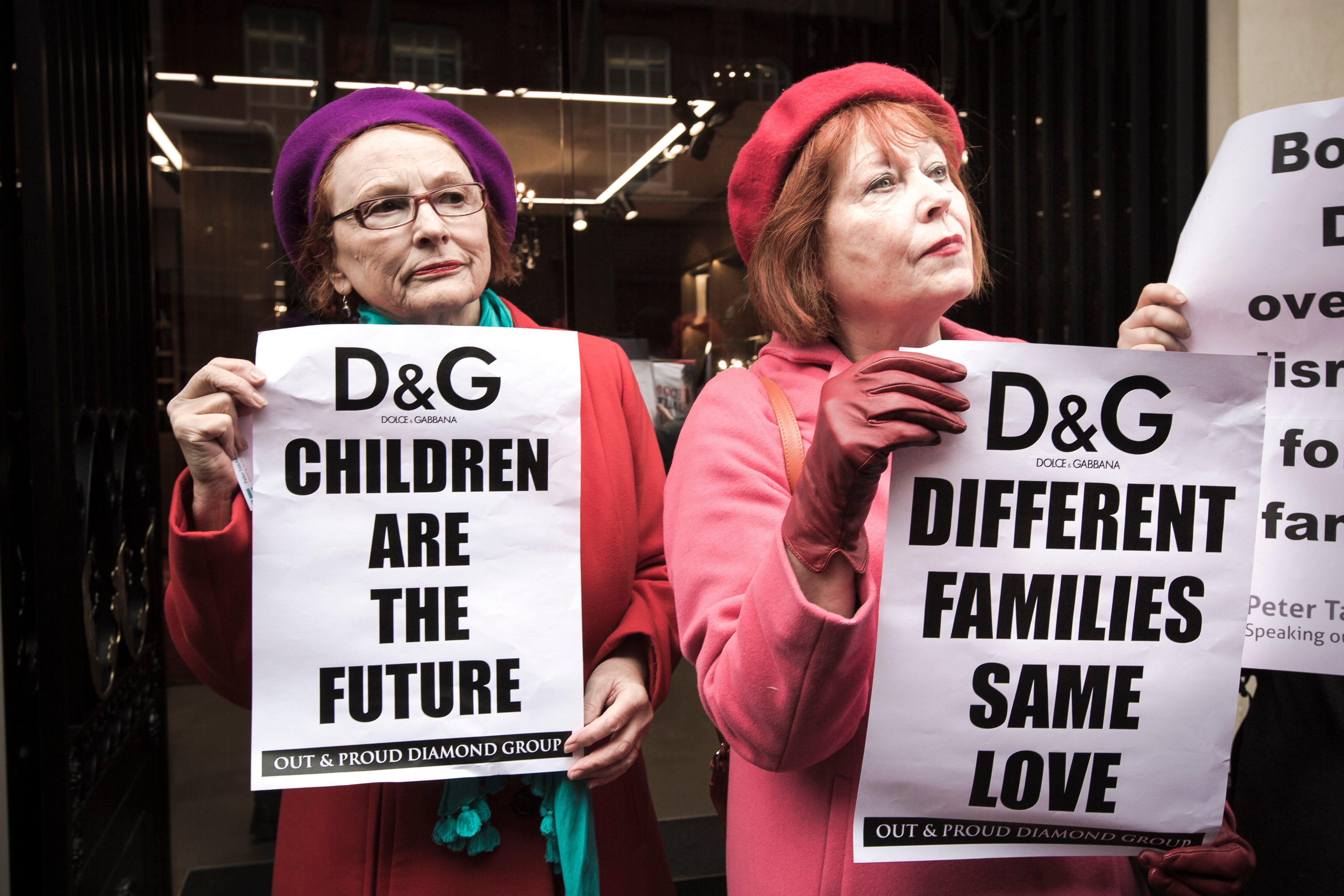For decades social science has found that there is an optimal family structure for a child’s intellectual, emotional and physical flourishing: being raised in a home by her biological, married parents.
All other arrangements—cohabiting biological parents, marriage with one step-parent, two adoptive parents or single parents—do not generally provide the same level of benefit.
But the rise of same-sex couples has led to a curious development. By their very structure, same-sex couples cannot meet what has been shown to be the gold standard of family structures for children.
Yet in recent amicus briefs in the pending Supreme Court marriage case, the American Psychological Association and the American Sociological Association claim that the science is “settled” that there is no difference between married, biological parents and same-sex parents for child outcomes.
How can that be?
An amicus brief filed in that case by the American College of Pediatricians and several well-known social scientists explains the paradox. In short, the American Psychological Association and American Sociological Association’s conclusions are driven by a political agenda and rely upon studies that on any other issue would be rejected on methodological grounds.
Children raised by same-sex couples are more likely to be unemployed, receive public assistance and to have an extramarital affair.
In fact, as shown below, when these methodological errors are corrected, this same body of studies reinforces what we’ve long known—that no other home situation compares with one headed by two married, biological parents.
And when the errors in one previous large-sample study are corrected, the study actually suggests that allowing same-sex couples to claim the status and benefits of marriage may lead to worse outcomes for the children in such families than if the couple did not marry.
Many of the Touted Studies Are Methodologically Inadequate
To draw valid population inferences, social science must follow certain methodological standards. Most fundamentally, a study must have a sufficient number of observations to detect true differences between groups, and those observations must be randomly selected in order to allow generalizations to the larger population. These standards are well known even to undergraduates engaged in social science research.
So it is surprising that, of the dozens of studies cited to support the so-called “scientific consensus” that the American Psychological Association claims, only eight meet scientific standards for population inference. The rest tell us nothing about the population at large.
Of these eight, the four older ones found no disadvantages for children raised by same-sex couples compared to other family structures. But as the recent American College of Pediatricians amicus brief shows, all four studies suffer an incurable flaw: about half (40-60 percent) of the children they report as being raised with same-sex parents are actually children with opposite-sex parents, either because of coding errors, or problems with the census data on which the studies relied.
In the end, this “dirty data” problem either invalidates their findings, or makes relying on them extremely problematic.
Same-Sex Family Structures Are Not as Beneficial
This leaves only four studies that are methodologically sound. And as the American College of Pediatricians brief shows, all four—the four most recent—find that children do not fare as well when raised by same-sex couples as when raised by married, biological parents.
To the contrary, such children often experience significantly higher levels of events or conditions such as being arrested, using marijuana, being depressed, having a learning disability or other psychological or developmental problem—and are less likely to graduate from high school. As adults, they are more likely to be unemployed, receive public assistance and to have an extramarital affair.
Children raised by married same-sex couples showed markedly higher rates of depression, unhappiness, fear and anxiety than those raised by unmarried same-sex couples.
This is not surprising, and it doesn’t mean that people in same-sex relationships are bad parents. To the contrary, many of them are wonderful parents individually.
But a same-sex couple simply cannot provide a child with the benefits of biological connections and gender diversity that her own two, married biological parents can provide.
And that is the fundamental problem with any policy—including recognition of same-sex marriage—that tends to encourage or facilitate a parent’s decision to raise her biological child in a household that does not include the other biological parent.
Marriage May Do More Harm Than Good to Children of Same-Sex Couples
But it gets worse. Advocates of same-sex marriage have assumed that the benefits to children from man-woman marriage would automatically transfer in both degree and kind to children raised by same-sex couples—if those couples could only marry.
But assumptions are not science. As the American College of Pediatricians brief shows, when one of the four studies mentioned above (finding “no difference” between same-sex and opposite-sex family structures) was corrected for coding errors, the study actually showed something else: In several important respects, children’s outcomes were worse when raised by married same-sex couples than if they were not married at all.
Specifically, children raised by married same-sex couples showed markedly higher rates of depression, unhappiness, fear and anxiety than those raised by unmarried same-sex couples. The results are shown in the following chart:
As the American College of Pediatricians brief explains, this is directly contrary to the pattern for opposite-sex couples, where marriage typically leads to improved outcomes for children.
The reasons for the disparity aren’t clear. Perhaps a parent’s marriage to a same-sex partner clearly signals to the child that she will likely never achieve her hope of one day being raised by the two people who brought her into the world, thereby triggering the trauma that increases the child’s risk of depression, unhappiness and fear. But given this study, at best it is uncertain whether in the aggregate marriage will really benefit the children of same-sex couples at all.
That is all the more reason why the Supreme Court should not wade into a policy issue that needs more time and science to settle.
This article has been modified.
































